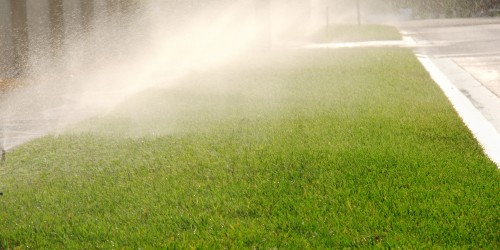Here in Texas, folks love their lawns. There’s nothing like a yard with lush green grass to toss a football around on. Turf does a lot for us: in fact, a 50’ x 50’ plot of grass can produce enough oxygen for a family of four!
But having a property that’s wall-to-wall with thick turf is pretty difficult, especially in Texas. Lawns can be finicky, and there are all sorts of issues that can spring up over time. Below are some of the most common — and the best ways to treat them!
Bald patches and moss
This is caused by too much shade. You might have trees towering overtop of your turf, or maybe it’s your house or another outdoor structure that’s the culprit. If it’s a tree, strategic pruning and thinning of the branches is the way to go. Sometimes, you might even want to take the tree down completely.
If it’s your house or a structure — or you love the tree and don’t want to take it down — there are other remedies. Start with overseeding the area with shade-loving grasses — St. Augustine and maybe some Zoysia grasses are your best bets. Another strategy you can take include increasing the height of your lawnmower blades in the shady areas so the grass can grow a little higher. It’ll get more sun through more surface area.
Drought stress
This is a pretty straightforward issue and one that we are no strangers to here in the hot, dry Lone Star state. While it’s obviously caused by a lack of water, how can the issue be handled without extra watering?
It’s less about the amount of water, and more about the strategy behind your watering. Water more deeply, less often. Lawns only need about 1” of water each week — and the tiniest bit of rain can count toward this inch! However, if you have rockier, thinner soil, it will benefit from two shorter waterings during the week. I also really recommend getting a rain barrel to collect rainwater!
Brown patches
If you have patches throughout your lawn, there could be a variety of causes. There’s a good chance it’s caused by a critter of some sort. The two most common culprits I see are chinch bugs and white grubs.
Chinch bugs love the hot and dry weather of Texas. In fact, they tend to only be a problem during droughts because they love the dry soil so much. They harm turf by sucking the sap from the crowns and stems of grass.
White grubs are the larvae of what most of us call May or June bugs — a type of scarab beetle. These pests burrow a couple of inches below turf and feed on the roots. You’ll know it’s a real problem if you can lift up your turf and start rolling it up like it’s carpet, or it feels spongy when you apply pressure. Peak feeding time for these creatures is late summer or early fall.
You won’t know for sure if you have grubs unless you dig up sections of your turf to a depth of four inches and see the grubs themselves! Grubs can sometimes be mistaken for take-all patch, a fungal turf infection that causes ring-like reddish-brown and yellow patches — and which can typically only be treated with fungicides.
For grubs, chinch bugs and sometimes take-all patch, proper lawn care that includes soil aeration, fertilization, dethatching, overseeding can often get rid of the issue! While we here at Maven caution against the use of insecticides or fungicides, sometimes it’s the only way. If you’d like to find out more about our lawn care services, get in touch. We’re happy to answer any questions you might have.



